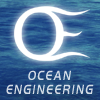
|
Aaron Marburg Principal Electrical/Computer Engineer amarburg@uw.edu Phone 206-685-8461 |
Biosketch
Dr. Marburg's research focuses on the development of robotic platforms for ocean exploration and science, with a focus on perception, situational awareness, and mission planning. He also has a background in remote sensing, photogrammetry and precision navigation, and a strong interest in human-machine interfaces, and data and metadata management. He has over 15 years experience in electrical and software design for robotics, scientific instrumentation and high-performance computing. Dr. Marburg joined APL-UW as a SEED postdoctoral researcher in 2015 after completing his Ph.D. at the University of Canterbury in Christchurch, New Zealand.
Education
B.S. Engineering, Swarthmore College, 1998
M.S. Aeronautical & Astronautical Engineering, Stanford University, 2004
Ph.D. Electrical & Computer Engineering, Canterbury University, 2015
Videos
|
Wave Energy Buoy that Self-deployes (WEBS) The Wave Energy Buoy that Self-deploys (WEBS) converts surface wave energy to mechanical and electrical power. WEBS is an easily deployed power station that can operate anywhere in the off-shore environment. Potential applications include power sensor payloads for scientific instrumentation; power station for autonomous systems, undersea vehicles, and/or surface vessels; and communications relay. |
13 Dec 2016
|
|
Publications |
2000-present and while at APL-UW |
Extrinsic calibration between an optical camera and an imaging sonar Lindzey, L., and A. Marburg, "Extrinsic calibration between an optical camera and an imaging sonar," In Proc., OCEANS 21, San Diego, CA, 20-23 September 2021, doi:10.23919/OCEANS44145.2021.9705956 (IEEE, 2022.) |
More Info |
15 Feb 2022 |
|||||||
|
In this paper, we present an open-source tool for calculating the extrinsic calibration between an optical camera and an imaging sonar. Precise determination of the relative 3D location of two sensors is a prerequisite to combining their data into a unified representation of the scene. Optical cameras are commonly used in many robotic domains due to their rich data, low price point, and small form factor. However, optical imagery and the resulting reconstruction degrade quickly in the presence of turbidity and marine snow. Conversely, imaging sonars resolve feature locations in range and azimuth, are largely unaffected by turbidity, but have an inherent elevation ambiguity due to their wide vertical beam pattern. The complementary strengths and weaknesses of these sensors make it appealing to combine them when developing a perception system for use in underwater reconstruction and manipulation tasks. As a first step, an extrinsic calibration describing the relative position of the two sensors must be determined before any data integration is possible. This paper presents a technique that uses a readily-available calibration target and simple hardware to construct a target with both optical and acoustic features and then introduces an open source toolbox for computing the extrinsic calibration. |
|||||||||
Report of the Resident AUV Workshop, 9–11 May 2018. Delaney, J.B., D.A. Manalang, A. Marburg, A. Nawaz, and K. Daly, "Report of the Resident AUV Workshop, 9–11 May 2018." Technical Report APL-UW TR 1901, Applied Physics Laboratory, University of Washington, Seattle, 84 pp. |
More Info |
27 Mar 2020 |
|||||||
|
Workshop participants divided into focus groups to consider resident autonomous undersea vehicle (R-AUV) use cases related to these four application areas: mid-ocean ridges and the overlying water column; gas hydrates and coastal oceans; polar, under-ice, and off-planet oceans; and maintenance and operation of installations. |
|||||||||
Cloud-accelerated analysis of subsea high-definition camera data Marburg, A., T.J. Crone, and F. Knuth, "Cloud-accelerated analysis of subsea high-definition camera data," Proc., OCEANS, 18-21 September, Anchorage, AK, 6 pp. (IEEE, 2017). |
More Info |
18 Sep 2017 |
|||||||
|
The seafloor high-definition camera (CamHD) installed on the Ocean Observatories Initiative (OOI) Cabled Array (CA) provides real-time video of the Mushroom vent at the ASHES hydrothermal field in the Axial Volcano caldera on the Juan de Fuca spreading zone (Figure 1). CamHD performs a pre-programmed 13-minute motion sequence every 3 hours. The video captured during this sequence is stored as a 13GB HD video file in the OOI Cyber-Infrastructure (CI) at Rutgers University. As of July 2017 there are approx. 6700 videos in the CI, all of which are publicly accessible through a conventional HTTP interface. Unfortunately, it is impractical for a researcher (and taxing on the CI bandwidth) to download, store, and process the extent of the video archive for analysis. We describe two elements of our efforts to accelerate CamHD video analysis: a cloud-hosted application which provides a simplified interface for extracting individual frames from CamHD videos in a time- and bandwidth-efficient manner; and a tool for the automatic isolation and identification of video subsets showing a sequence of known camera positions. Automatic identification of these video segments allows rapid and automatic development of e.g., time lapse videos. |
|||||||||
In The News
|
Meet Catfish Charlie, the CIA's robotic spy IEEE Spectrum, Allison Marsh In a discussion of the evolution of underwater robots, Aaron Marburg notes the unique observations afforded by robotic exploration of the ocean and recounts that one of the earliest autonomous undersea explorers was APL-UW's SPURV. |
26 Feb 2021
|
|
Scientists unravel the ocean's mysteries with cloud computing UW Information Technology, Elizabeth Sharpe The OOI Cabled Array is delivering data on a scale that was previously not possible. More than 140 instruments are working simultaneously. |
8 Nov 2018
|
|
U.S. Navy wants a floating fiber optic network Popular Mechanics, Kyle Mizokami TUNA is a portable, temporary communications network made up of floating communications buoys linked by fiber optic cable. Individual buoys will likely be powered by WEBS, which generates electricity from wave energy and consists of two floats that sit on the surface of the water and are rotated by passing waves. |
6 Jan 2017
|






